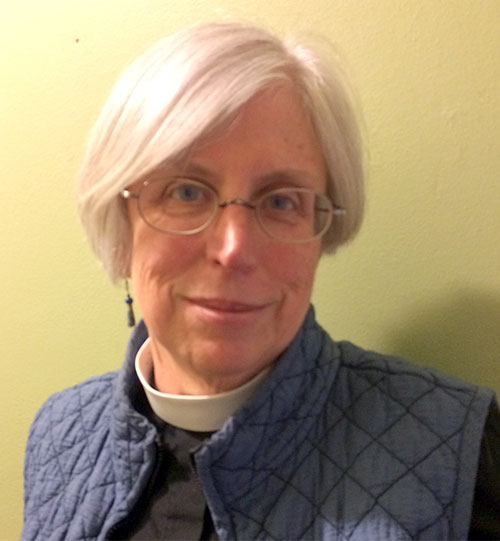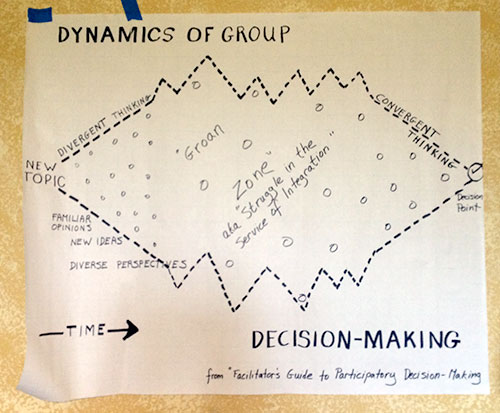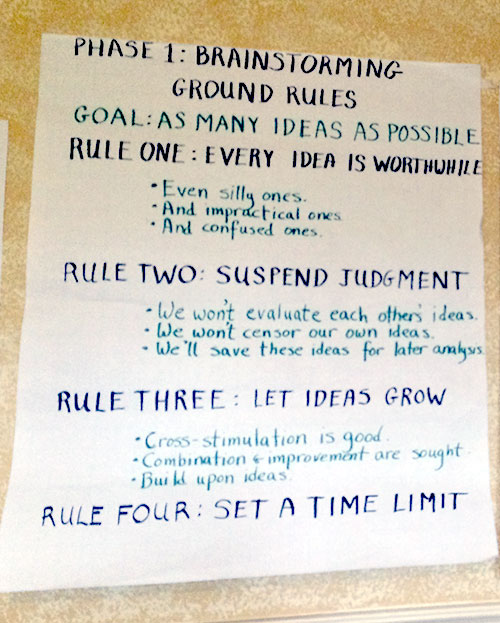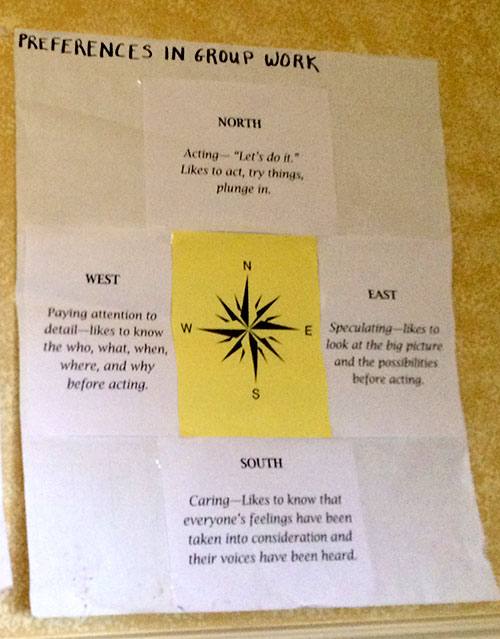
Vestry retreats are one of the things that we leaders are supposed to do. I have now planned and led quite a few. Some of them are good experiences; a few have been frustrating; but they have all been disconnected from the rest of the work of the vestry or Bishop’s Advisory Committee.
The CCD materials this year gave me a better idea for the BAC retreat. The model that provided the inspiration was the Action-Research-Change Model. We started applying this model last year, with a Mutual Ministry Review and feedback of the results to the congregation. By thinking of the February BAC retreat as the “Joint Action Planning” step from those results, we have (1) validated the thought and time that the congregation put into the MMR, and (2) kept the momentum going for change.
The MMR gave us several focal points for change desired by the congregation. But there is a long way from a general goal, “welcome more young people,” to specific actions. It would be easy for a meeting to degenerate into lamentation and scattered ideas with no consensus. That would be particularly frustrating for this BAC, which tends toward the “STJ” area of the Meyers-Briggs typology.
This is where the other CCD resource came in. One of the recommended books, Kaner, Lind, Fisk & Berger, Facilitator’s Guide to Participatory Decision-Making (3rd ed.), provides a model for decision-making in a group. Our Senior Warden and I shared that model with the BAC members before and at the beginning of our meeting (leadership development), and I structured the retreat using that model, with clearly designated time for brainstorming and for the “Groan Zone.” We focused on two specific questions: how to increase our “visible outreach,” (“Action,” in the Gather-Transform-Send model) and how to make the physical space more welcoming to families with young children (“Greeting” and “Orienting” in the Gather-Transform-Send model
Time will tell whether the ideas we agreed on are as actionable as we believe, and whether they produce good fruit. In next winter’s MMR we will ask the BAC to evaluate how the ideas worked, and ask the congregation what fruits they see. That is the beauty, I think, of this Action-Research-Change Model: it creates continuity of focus.
 \
\
